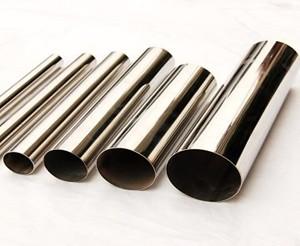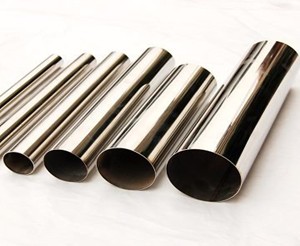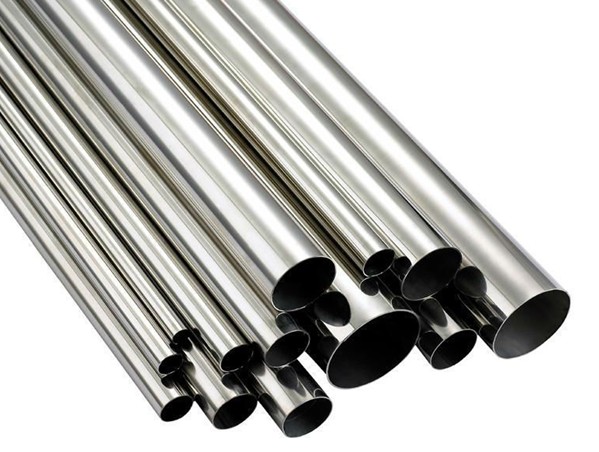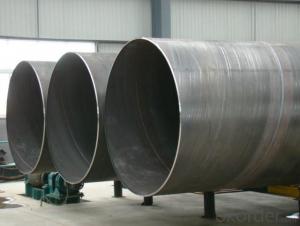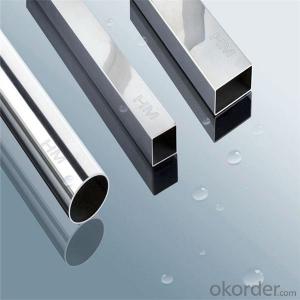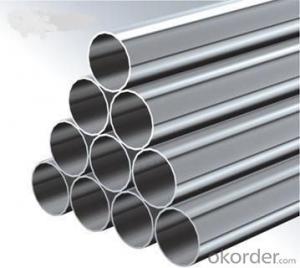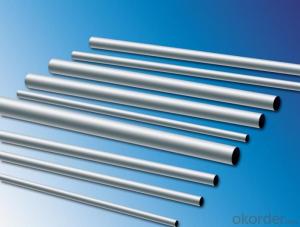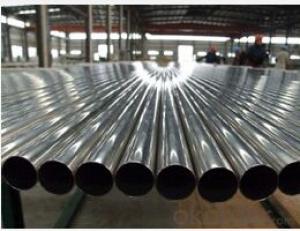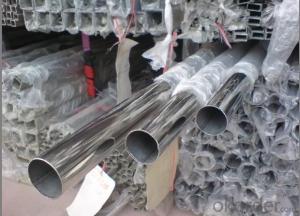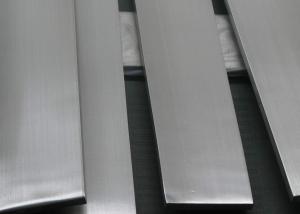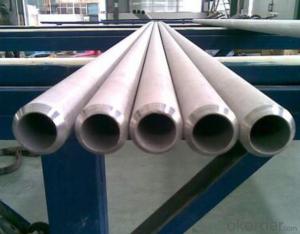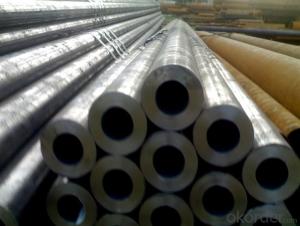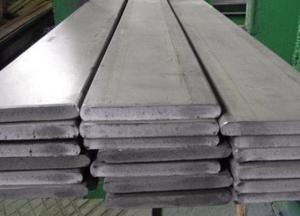stainless steel welded pipe
OKorder Service Pledge
OKorder Financial Service
You Might Also Like
stainless steel welded pipe
Stainless steel is a production which not easy rust,acid resistance and corrosion resistance,so it is widely used in light industry,heavy industry,daily necessities and the decoration industry.my company long term supply stainless steel porducts including:stainless steel sheet,stainless steel coil and stainless steel tube
Specifications
1.Specification:21.3*3.73mm or others
2.Surface:4k/6k//8k
3.Length:6m or as your requirement
A series of photos
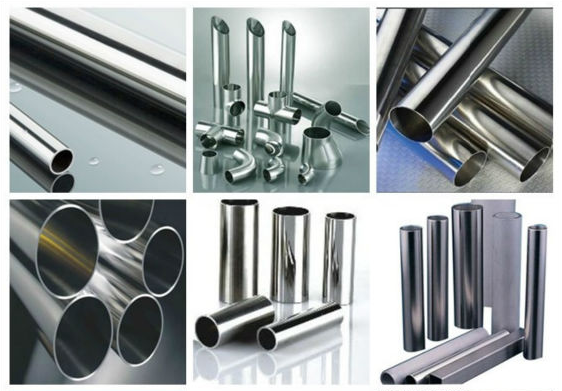

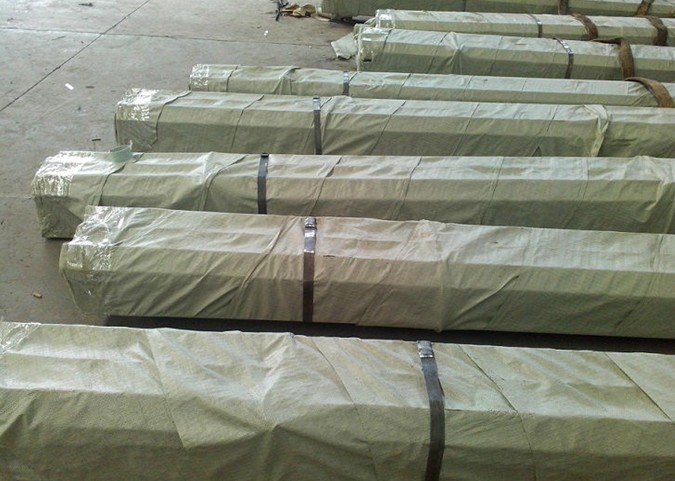
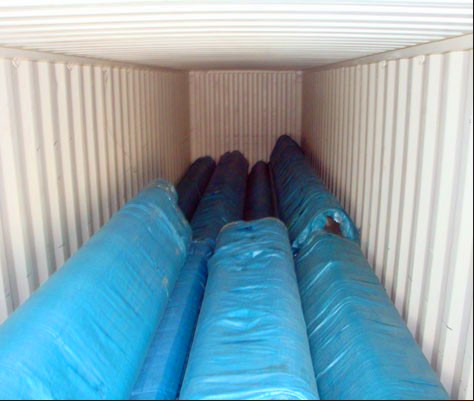
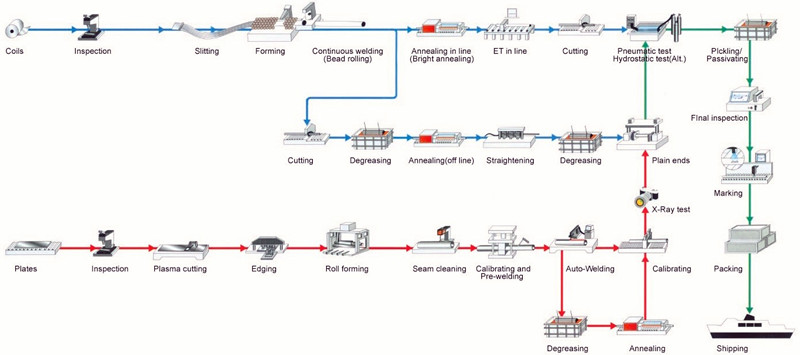

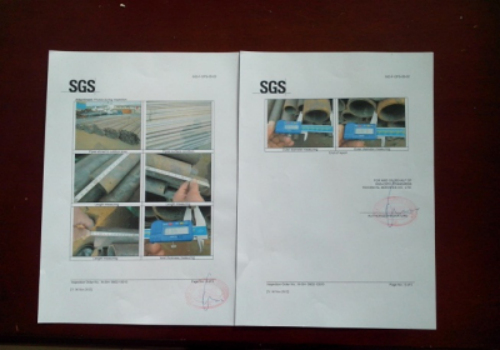
A series of pictures
- Q: What are the common shapes of stainless steel pipes?
- There are several common shapes of stainless steel pipes that are widely used in various industries. These shapes include round pipes, square pipes, rectangular pipes, and oval pipes. Round pipes are one of the most common shapes and are used in a wide range of applications. They are typically used for transporting fluids, gases, and other materials. Round pipes are also suitable for structural applications such as handrails, scaffolding, and support beams. Square pipes have a square cross-section and are often used in construction projects, architectural designs, and furniture manufacturing. They provide a clean and modern look and are often used for framing structures, manufacturing shelves, and creating decorative elements. Rectangular pipes have a rectangular cross-section and are commonly used in construction, engineering, and manufacturing industries. They are often used for building frameworks, manufacturing gates, fences, and various structural components. Oval pipes have an elliptical or oval shape and are used in applications where aesthetics play a significant role. They are commonly used in architectural designs, automotive industry, and decorative applications. Overall, the choice of shape for stainless steel pipes depends on the specific requirements of the application and the desired aesthetics. Each shape has its own advantages and is selected based on factors such as strength, durability, ease of fabrication, and overall design requirements.
- Q: Are stainless steel pipes suitable for power generation plants?
- Power generation plants find stainless steel pipes to be a suitable option. Stainless steel is renowned for its exceptional resistance to corrosion, which makes it an ideal choice for power generation plants dealing with high temperatures, pressure, and corrosive surroundings. It is common for power generation plants to utilize different fluids like steam, water, and chemicals, which have the potential to cause corrosion and deterioration of the piping system. Stainless steel pipes can withstand such harsh conditions while ensuring long-lasting performance. Additionally, stainless steel pipes possess high strength and durability, which is crucial for power generation plants operating under high pressures. They can handle the stress and strain of the system without the risk of failure or leakage. Moreover, stainless steel exhibits resistance to scaling and fouling, which plays a significant role in maintaining the power plant's efficiency. The smooth inner surface of stainless steel pipes minimizes friction and pressure losses, guaranteeing the efficient flow of fluids. Furthermore, stainless steel pipes are easy to maintain and clean, eliminating the need for frequent inspections or repairs. This reduces downtime and maintenance costs for power generation plants. In conclusion, the remarkable corrosion resistance, strength, durability, and efficiency of stainless steel pipes make them highly suitable for power generation plants. They provide a dependable and long-lasting solution for fluid conveyance in demanding environments.
- Q: Can stainless steel pipes be used for vacuum systems?
- Indeed, vacuum systems can utilize stainless steel pipes. Owing to its exceptional strength, resistance to corrosion, and minimal outgassing characteristics, stainless steel is widely favored in vacuum-related endeavors. It has the capacity to endure substantial levels of vacuum while upholding its structural integrity when subjected to pressure. Various industries, including aerospace, semiconductor manufacturing, and scientific research, commonly employ stainless steel pipes to construct their vacuum systems. Moreover, these pipes can be effortlessly cleaned and upheld, rendering them a dependable and enduring choice for vacuum applications.
- Q: Can stainless steel pipes be used for brewery equipment?
- Indeed, brewery equipment can make use of stainless steel pipes. The utilization of stainless steel in brewery equipment is highly recommended owing to its resistance to corrosion, longevity, and capability to uphold the quality of the beer. Notably, stainless steel pipes exhibit no reactions with the beer or any cleaning and sanitizing substances employed during the brewing procedure, guaranteeing the purity and flavor of the end product. Furthermore, stainless steel pipes are hassle-free to clean and uphold, thereby diminishing the potential for contamination and facilitating streamlined operations within the brewery.
- Q: Are stainless steel pipes suitable for pharmaceutical industries?
- Yes, stainless steel pipes are highly suitable for pharmaceutical industries. Stainless steel is known for its excellent corrosion resistance and ability to withstand high temperatures and pressure. These qualities make it ideal for pharmaceutical applications, where maintaining product purity and preventing contamination are critical. Stainless steel pipes are non-reactive, meaning they do not interact with the pharmaceutical products being transported, ensuring the integrity and safety of the drugs. They are also easy to clean and sanitize, making them suitable for applications that require frequent cleaning, such as pharmaceutical manufacturing processes. Furthermore, stainless steel pipes comply with the stringent regulations and standards set by pharmaceutical authorities, ensuring that the industry's quality and safety requirements are met. They can be customized to meet specific needs, such as different sizes, shapes, and wall thicknesses, allowing for flexibility in design and installation. Overall, stainless steel pipes offer numerous advantages for pharmaceutical industries, including durability, resistance to corrosion and contamination, ease of cleaning, and compliance with industry standards.
- Q: Can stainless steel pipes be coated with other materials?
- Yes, stainless steel pipes can be coated with other materials. Coating stainless steel pipes with other materials is a common practice in various industries. The purpose of coating stainless steel pipes is to enhance their performance, protect them from corrosion, improve their aesthetic appearance, or provide additional functionality. Common coating materials used on stainless steel pipes include epoxy, polyethylene, PVC, zinc, or ceramic coatings. These coatings can provide various benefits such as increased resistance to corrosion, improved abrasion resistance, better insulation properties, or reduced friction. Coating stainless steel pipes with other materials is often done through processes like electroplating, hot-dipping, or powder coating. The choice of coating material and process depends on the specific requirements and intended application of the stainless steel pipes.
- Q: What are the advantages of stainless steel pipes?
- There are several advantages of using stainless steel pipes. Firstly, stainless steel pipes are known for their excellent corrosion resistance. They are resistant to rust, oxidation, and other types of corrosion, making them highly durable and long-lasting. This resistance to corrosion also makes stainless steel pipes suitable for various industries, including marine, chemical, and food processing. Secondly, stainless steel pipes have high strength and heat resistance. They can withstand high pressure, making them suitable for applications that require transporting fluids or gases at high temperatures and pressures. Stainless steel pipes also have superior heat resistance, making them suitable for applications involving extreme temperatures. Additionally, stainless steel pipes are hygienic and easy to clean. The smooth surface of stainless steel pipes makes it difficult for bacteria to adhere to the surface, making them ideal for sanitary applications such as food processing, pharmaceuticals, and medical devices. Stainless steel pipes are also easy to clean and maintain, reducing the risk of contamination. Furthermore, stainless steel pipes have excellent aesthetic appeal. They have a sleek and modern appearance, making them suitable for architectural and decorative applications. Stainless steel pipes are often used in construction, interior design, and automotive industry for their attractive and polished finish. Lastly, stainless steel pipes are environmentally friendly. They are 100% recyclable and can be reused without losing their properties. This makes stainless steel pipes a sustainable choice and contributes to the reduction of waste and environmental impact. In conclusion, the advantages of stainless steel pipes include corrosion resistance, high strength and heat resistance, hygienic properties, aesthetic appeal, and environmental friendliness. These qualities make stainless steel pipes a versatile and reliable choice for a wide range of applications.
- Q: How is stainless steel pipe manufactured?
- Stainless steel pipe is manufactured through a process called pipe making. This process involves several steps that ensure the production of high-quality and durable stainless steel pipes. The first step in manufacturing stainless steel pipes is the selection of the raw materials. Stainless steel, which is a combination of iron, chromium, and other elements, is chosen for its corrosion-resistant properties. The specific grade and composition of stainless steel are carefully selected based on the intended application of the pipe. Once the raw materials are selected, they are melted in a furnace. This melting process is known as the electric arc furnace process. The stainless steel is heated to high temperatures, typically around 1700 degrees Celsius, to form a molten metal. After the molten metal is formed, it is transferred to a continuous casting machine. This machine helps in creating a solid cylindrical shape known as a billet. The billet is then transferred to a rolling mill where it is shaped into a seamless pipe. The rolling mill consists of multiple stands that gradually reduce the thickness and diameter of the billet. The billet is passed through these stands multiple times, with each pass reducing its size further. This continuous rolling process ensures the uniformity and consistency of the stainless steel pipe. Once the desired size is achieved, the pipe is cut to the required length. This is done using saws or other cutting tools. The ends of the pipe are then prepared for welding or other joining methods. In some cases, stainless steel pipes may undergo additional processes such as heat treatment or surface finishing. Heat treatment helps in improving the mechanical properties of the pipe, while surface finishing can provide enhanced aesthetics or corrosion resistance. Finally, the stainless steel pipes are inspected for quality and compliance with industry standards. This may involve various testing methods such as visual inspection, dimension and wall thickness measurement, non-destructive testing, and chemical analysis. Overall, the manufacturing of stainless steel pipes involves a combination of melting, casting, rolling, cutting, and inspection processes. These processes ensure the production of high-quality stainless steel pipes that are suitable for a wide range of applications including plumbing, construction, and industrial uses.
- Q: What is the maximum temperature that stainless steel pipes can withstand?
- The maximum temperature that stainless steel pipes can withstand depends on the grade of stainless steel used. Generally, stainless steel pipes can withstand high temperatures ranging from 1200 to 1600 degrees Fahrenheit (650 to 870 degrees Celsius). However, it is important to note that prolonged exposure to these extreme temperatures may cause the stainless steel to lose its strength and potentially result in deformation or failure. It is always recommended to consult the specific manufacturer's guidelines or a materials engineer to determine the maximum temperature limits for a particular grade of stainless steel pipe in any given application.
- Q: What kind of stainless steel square tube is used in ordinary square tubes?
- General specifications of stainless steel tube at the inner diameter and wall thickness, the length can be decided according to the needs of consumers, the common market of stainless steel pipe specifications are: diameter more than 6.0mm, the wall thickness below 13mm; diameter greater than 30mm, the wall thickness is greater than 1.2mm; diameter greater than 30mm, wall thickness less than 1.2mm.
Send your message to us
stainless steel welded pipe
OKorder Service Pledge
OKorder Financial Service
Similar products
Hot products
Hot Searches
Related keywords
